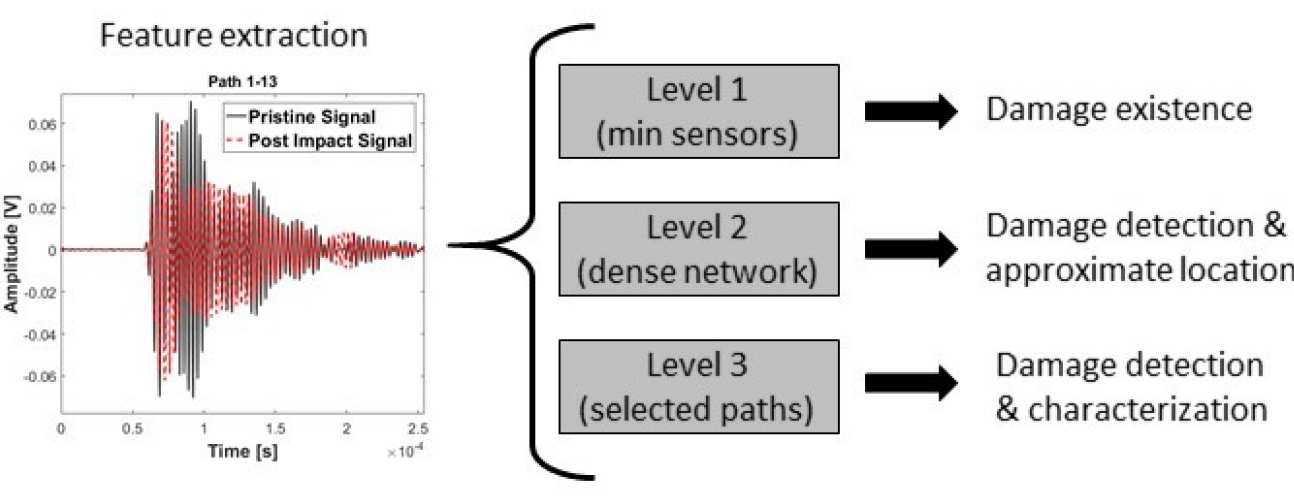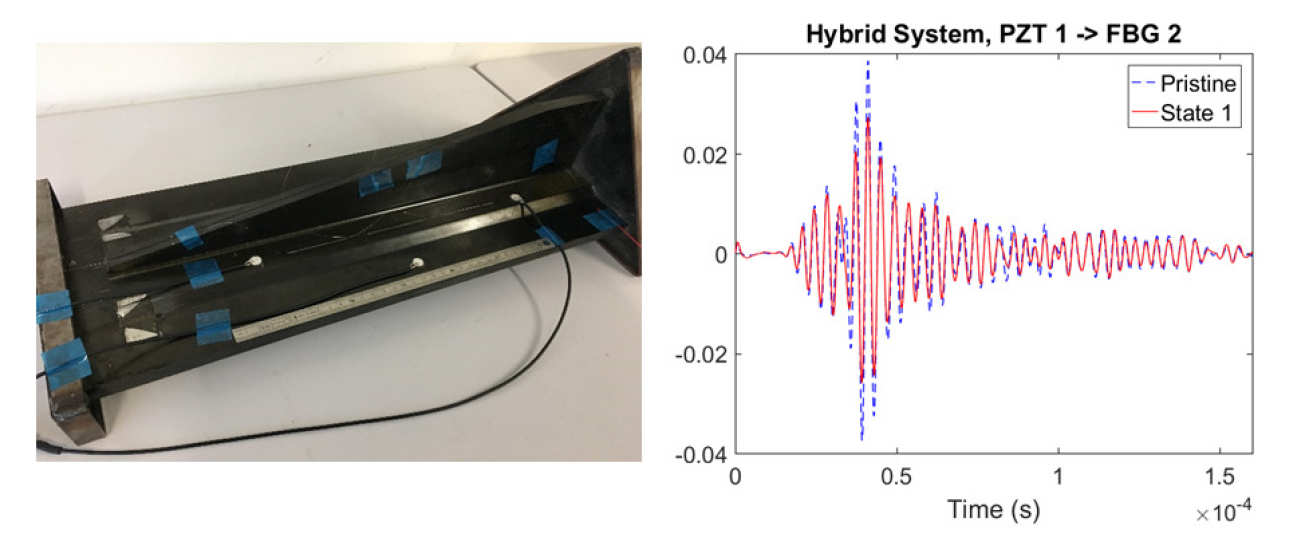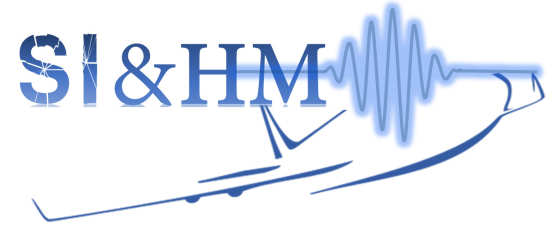The decision for any SHM system to be considered as a diagnostic and prognostic system on board a real structure is driven by its additional cost, weight and the reliability of the decision making process. Before any SHM system is designed for a specific POD and reliability, the engineer needs to define what is the intended function of the proposed diagnostic system. To address this, we have proposed a multi-level strategy for different levels of SHM prognosis. Our methodology was then tested on a curved composite fuselage panel for detecting BVID under the stiffener, which is one of the of most challenging damage detection scenarios for SHM techniques. All three levels of diagnosis have shown to provide reliable results based on the intended functions related to each level. The multilevel methodology is based on guided waves, weighted energy arrival method (WEAM) in combination with electro-mechanical Impedance based detection.

Ultrasonic Guided Wave:
Our methodology have been validated on a composite fuselage panel. The panel was impacted under the stiffener from the outer skin to cause BVID. In addition to WEAM, we have also developed baseline free and temperature compensation methods with guided waves which have also been tested for detecting skin/stiffener debonding for the stiffened panel.
 Selected publications:
Selected publications:
- Z. Sharif Khodaei and M.H. Aliabadi, “Damage detection and Characterization in composite structures with PZT transducers – Active sensing”, Structural Health Monitoring for Advanced Composite Structures, Imperial College Press/World Scientific, Vol. 8. 2017.
- Zahra Sharif Khodaei and M.H. Aliabadi. " A Multi-Level Decision Fusion Strategy for Condition Based Maintenance of Composite Structures", Materials 2016, 9(9), 790 special issue on Advances in Structural Health Monitoring for Aerospace Structures, September 2016.
Instantaneous baseline:
The interrogation area was situated at the centre of the panel, while the two available baseline areas where on either side. The areas were geometrically similar in that the area covered contained the same geometric features and spacing, e.g. stiffener and skin. Damage was successfully detected.
Temperature compensation:
Modified Baseline Signal Stretching Method: Instead of applying a single stretch factor to the entire signal a range of stretch factors are proposed. The correction is not applied to an individual signal waveform, but directly on the residual envelope in an iterative manner.
Selected publications:
- Salmanpour, M.S., Z. Sharif Khodaei, and M.H. Aliabadi, „Instantaneous Baseline Damage Localization Using Sensor Mapping.“ IEEE Sensors Journal, 2017. 17(2): p. 295-301.
- Salmanpour, M. S., Z. Sharif Khodaei, and M. H. Aliabadi. "Guided wave temperature correction methods in structural health monitoring." Journal of Intelligent Material Systems and Structures (2016): 1045389X16651155.
Electro-Mechanical Impedance (EMI):
The EMI method has been used to develop self-diagnostic capabilities for the SHM system to increase the reliability of the acquisition and decrease the probability of false alarm by detecting faulty sensors. The change in the real part of the EMI spectrum can be correlated with the distance of the damage from the sensor (damage within the structure), while the imaginary part can confirm the integrity of the sensor and its attachment to the structure. By comparing the pristine EMI plot with current state through Damage Index (DI) definition, the integrity of the SHM system (sensor attachment, sensors health and wiring) can be checked before assessing the health of the structure. Therefore, faulty sensors will be identified and false alarm or missed-detection rates will decrease.

In addition, EMI can also be used to detect damage in proximity of the sensors. This information can be used for multi-level damage detection to optimize the localization and characterization of the damage.
Selected publications:
- Sharif-Khodaei Z, Ghajari M, Aliabadi MH, 2016, “Impact Damage Detection in Composite Plates using a Self-diagnostic Electro-Mechanical Impedance based Structural Health Monitoring System”, Journal of Multiscale Modelling, P1550013.
-
Fangxin Zou and M H Aliabadi, "A boundary element method for detection of damages and self-diagnosis of transducers using electro-mechanical impedance", Smart Materials and Structures, Volume 24, Number 9, 2015.
Hybrid Technique:
In a hybrid system the advantages of utilising Piezoelectric (PZT) actuator is combined together with the advantages of the Fibre Optic (FO) sensors which are high sensitivity to strain, low weight, temperature compensation, possibility of multiplexing and immunity from electromagnetic interference. Multiple Fibre Bragg Grating (FBG) sensors can be engineered on a single fibre so that when a broad band light is used, part of the light will pass through the gratings and part of it will be reflected at a specific wavelength unique to that FBG. When damage is present close to the FBG, there will be changes in the reflected spectrum in terms of its intensity and wavelength. These changes can then be converted into strain measurements (axial only).
The FBG sensors have low signal-to-noise ratio so it requires filtering and averaging to obtain precise results. Damage was simulated by adding mass at different locations to assess the applicability of the hybrid method to a built up structure such as skin/stringer section.

